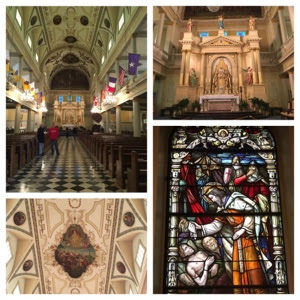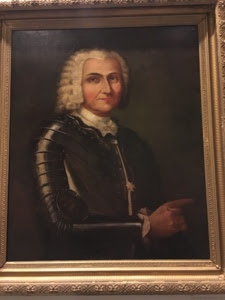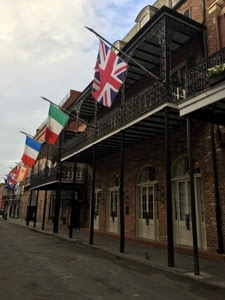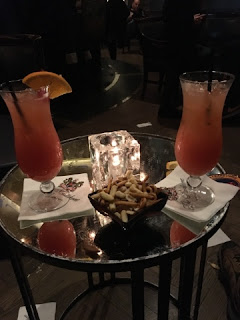Certainly its oceanfront communities aren't as well known as Miami, Fort Lauderdale or Tampa, but saying that they're forgotten implies that the towns along this coast were at one point noteworthy.
Tim and I decided to form our own opinions. Saying goodbye to Interstate 10 at Pensacola, we dropped down to Highway 98 and turned east. We passed through Destin and Panama City as well as the smaller towns of Mexico Beach and the unpronounceable--to me, anyway!--Apalachicola. (Point C)
We had reservations for a campsite in Carrabelle, Florida. (Point D) A friend had told us Highway 98 was the scenic way to get there and he was right. The Gulf was visible for most of the way.
Upon our arrival, we were pleased to find that the Carrabelle Beach Resort lived up to its name. Almost 2 miles of fine, white sand was located right across the highway from the campground, ideal for beach combing.
Trip Advisor listed several points of interest in Apalachicola as well as St. George Island and Carrabelle. So Monday we backtracked 22 miles to the unpronounceable town to see the Maritime Museum and the Orman House.
Next to New Orleans and Mobile, Apalachicola at the mouth of the Apalachicola River was once the third busiest port on the Gulf. Thomas Orman made a fortune by shipping cotton south from Columbus, Georgia to ships bound for the northern states and England. If the Union blockade during the Civil War had not changed all that, perhaps this town's name would trip off my tongue--"Apple-latch-ee-cola." Instead, Apalachicola is today a sleepy fishing village whose people harvest shrimp, crawfish and sponges from the Gulf.
The state ranger at the Orman House told us we ought to visit St. George Island. Its sand dunes were used by the War Department to train soldiers bound for the Pacific Theater during World War II. It's also where amphibious troops prepared for D-Day's landing on the beaches of Normandy.
 |
| Photo displayed at Camp Gordon Johnston World War II Museum |
Tuesday we drove across the Bryant G. Patton Bridge, the third longest bridge in Florida, to reach St. George Island.
Measuring 4.11 miles, the Sunshine Skyway Bridge over the bay at Tampa edges St. George Island Bridge's 4.1 miles out of second place by a whisker. Of course, the Overseas Highway to Key West across a 113-mile chain of coral and limestone islands connected by 42 bridges, one of them 7 miles long, tops them both.
The hiking trails through the piney woods of the park begged our attention before we turned to the beach. We were told that the terrain of woods and sand dunes mimics northern France, making St. George Island the perfect location for D-Day training.
The hiking trails through the piney woods of the park begged our attention before we turned to the beach. We were told that the terrain of woods and sand dunes mimics northern France, making St. George Island the perfect location for D-Day training.
Breaking through the woods, we found the dunes very impressive. It's hard to see the scale of them in my photos, but trust me, they are tall and massive.
Tuesday's visit to the sand dunes of St. George Island whetted our interest for visiting Carrabelle's World War II Museum where artifacts tell the story of Camp Gordon Johnston. Seeing the size of Carrabelle today, one would never know that between 24,000 and 30,000 soldiers rotated through this training camp. Barracks were simply tents with sand floors. Nothing remains of the camp but the artifacts at the museum, a testament to how vital Carrabelle was to winning the war.
Now the town's claim to fame is the city's police station--a telephone booth labeled the World's Smallest Police Station. The phone booth was installed in 1963 to keep policemen out of the rain. “They used to have a phone on the wall across the street,” said Police Chief Jesse Smith, during an interview with Johnny Carson on The Tonight Show in 1991. “But every time it rained, the man who answered it would get wet.” The police station alone makes Carrabelle memorable for me.
Calling the Florida Panhandle the Forgotten Coast is accurate, but its past doesn't merit that label. We found its history to be incredibly worthy of notice.












































